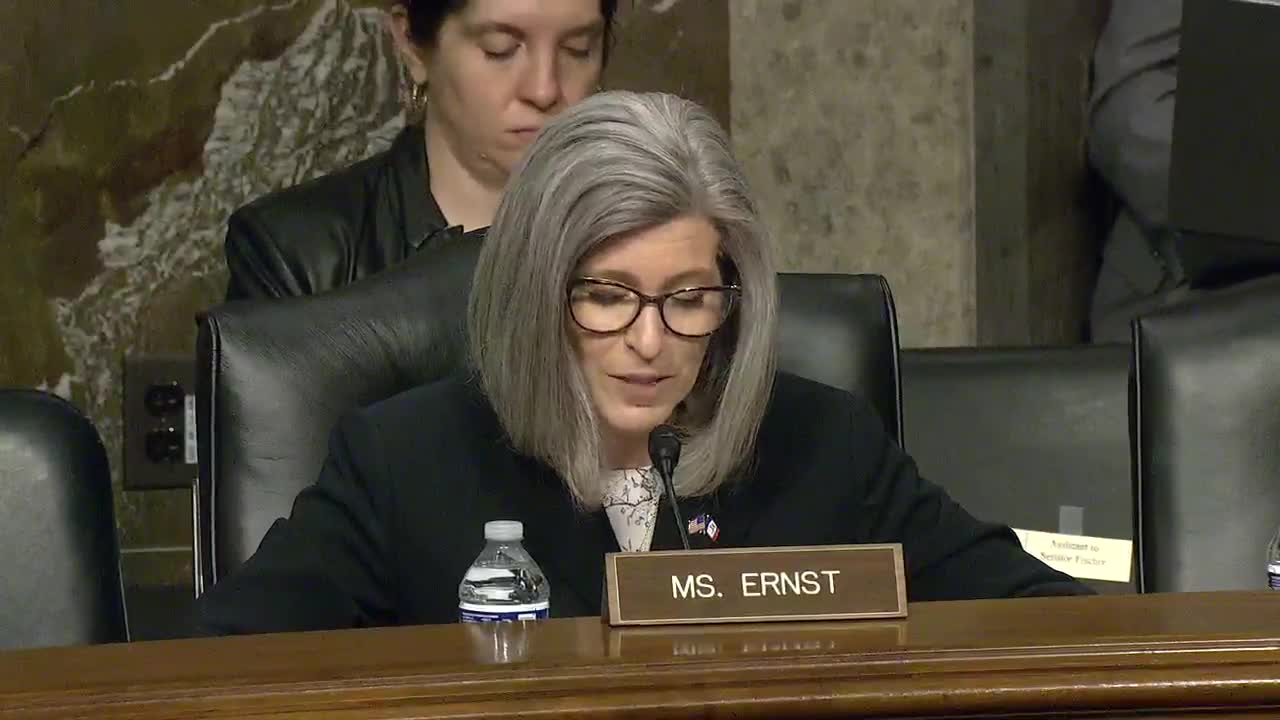Senators press Army Secretary on tragic helicopter crash and family communication
June 05, 2025 | Armed Services: Senate Committee, Standing Committees - House & Senate, Congressional Hearings Compilation
This article was created by AI summarizing key points discussed. AI makes mistakes, so for full details and context, please refer to the video of the full meeting. Please report any errors so we can fix them. Report an error »

The U.S. Senate Committee on Armed Services convened on June 5, 2025, to discuss the Department of the Army's posture in relation to the Defense Authorization Request for Fiscal Year 2026 and the Future Years Defense Program. A key focus of the meeting was the Army's adaptation to evolving operational needs, particularly in training and talent management for more technical units.
Secretary Driscoll highlighted innovative training methods being implemented at Fort Jackson, where soldiers are using drones to film their training exercises. This approach allows for real-time feedback and iterative learning, significantly enhancing the Army's operational capabilities. Driscoll noted that insights gained from these training sessions have influenced how the Army engages with drone technology, showcasing a commitment to continuous improvement and adaptation.
The meeting also addressed the tragic helicopter crash at Reagan National Airport that resulted in 67 fatalities. Senator Kaine expressed concerns regarding the Army's response to the families affected by the incident, emphasizing the need for transparency and accountability. He urged the Army to communicate the changes made in protocols and safety measures since the crash, to reassure families that their concerns are being taken seriously.
Senator Kaine pointed out that while some progress has been made, including adjustments to helicopter operations in the National Capital Region, public awareness of these changes remains limited. He called for improved communication between the Army and the families of the victims, stressing the importance of maintaining an open dialogue to foster trust and understanding.
The discussions underscored the Army's ongoing efforts to balance operational readiness with safety and accountability, as it navigates the complexities of modern military training and public expectations. As the Army prepares for the upcoming fiscal year, these conversations will play a crucial role in shaping its strategies and ensuring that lessons learned from past incidents are effectively integrated into future operations.
Secretary Driscoll highlighted innovative training methods being implemented at Fort Jackson, where soldiers are using drones to film their training exercises. This approach allows for real-time feedback and iterative learning, significantly enhancing the Army's operational capabilities. Driscoll noted that insights gained from these training sessions have influenced how the Army engages with drone technology, showcasing a commitment to continuous improvement and adaptation.
The meeting also addressed the tragic helicopter crash at Reagan National Airport that resulted in 67 fatalities. Senator Kaine expressed concerns regarding the Army's response to the families affected by the incident, emphasizing the need for transparency and accountability. He urged the Army to communicate the changes made in protocols and safety measures since the crash, to reassure families that their concerns are being taken seriously.
Senator Kaine pointed out that while some progress has been made, including adjustments to helicopter operations in the National Capital Region, public awareness of these changes remains limited. He called for improved communication between the Army and the families of the victims, stressing the importance of maintaining an open dialogue to foster trust and understanding.
The discussions underscored the Army's ongoing efforts to balance operational readiness with safety and accountability, as it navigates the complexities of modern military training and public expectations. As the Army prepares for the upcoming fiscal year, these conversations will play a crucial role in shaping its strategies and ensuring that lessons learned from past incidents are effectively integrated into future operations.
View full meeting
This article is based on a recent meeting—watch the full video and explore the complete transcript for deeper insights into the discussion.
View full meeting